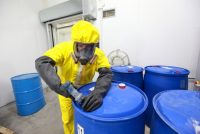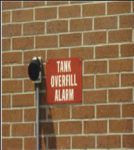Archives
Keep Your Refresher Training Fresh
Do you dread doing yet another refresher training session on an oft-repeated topic? In today’s Advisor, we give you several ideas for freshening up your refresher training. Periodic refresher training is required by many Occupational Safety and Health Administration standards. And even when it isn’t, refresher training is essential for keeping skills sharp and preventing […]
ICPs Should Help Expedite Emergency Response
11 Ways Employees Can Prevent Chemical Exposures
Do your employees know how to handle hazardous materials safely to prevent exposures? Here are 11 simple measures that can keep them safe.
Integrated Contingency Plans—The One Plan
React to Reactive Chemical Hazards
Reactive chemicals are among the most dangerous because they can suddenly explode or cause fires. Make sure your employees know how to handle these hazardous materials and prevent potentially serious injuries. Reactive chemicals may react with air, water, or other chemicals. Some reactive chemicals are even self-reactive. These substances may also be sensitive to shock, […]
Hybrid Inspection and Testing Program an Option for SPCC Tier II Facilities
10 Tank Management Tips
When deciding whether to install an underground storage tank (UST) or an aboveground storage tank (AST) for petroleum or hazardous substance storage, or when managing the daily tank operations, you need to consider the very different regulations related to ASTs and USTs. These tips—based on federal regulations—will help you make informed decisions related to USTs […]
Shoulder the Responsibility for Preventing Shoulder Injuries
If your workers must reach, lift and carry, bend, or twist their bodies or perform other activities that place them in a nonneutral posture, their shoulders may be at risk. The shoulder is a ball-and-socket joint and is, in fact, the most mobile joint in the body, allowing 230 degrees of motion vertically and enabling […]






